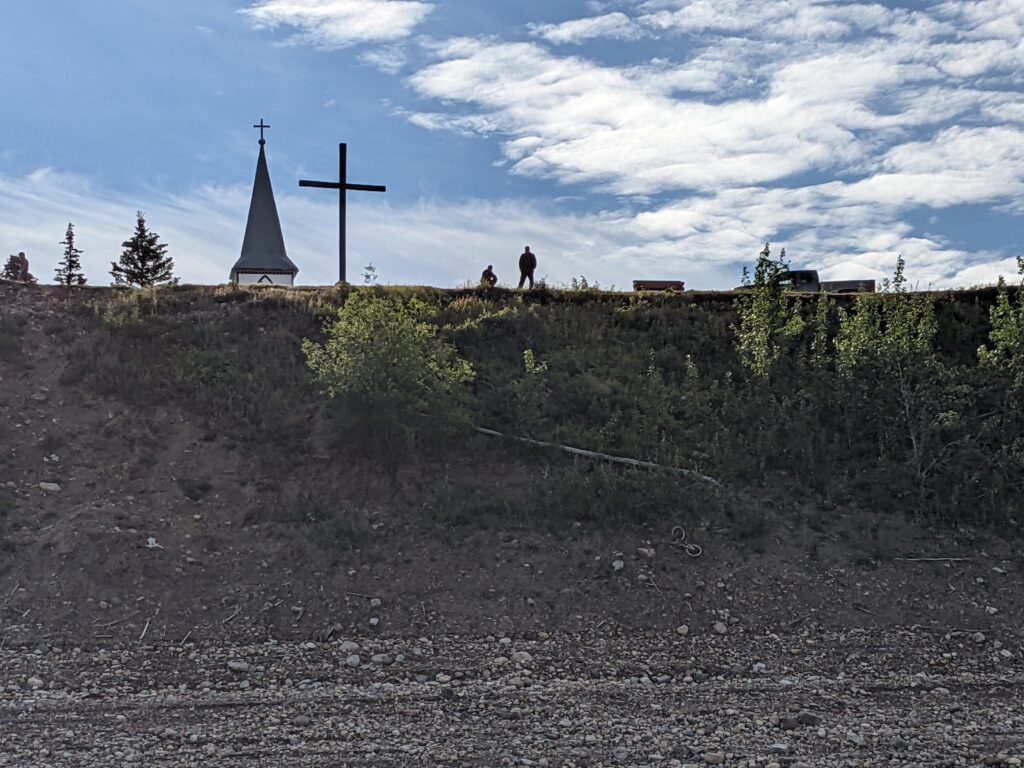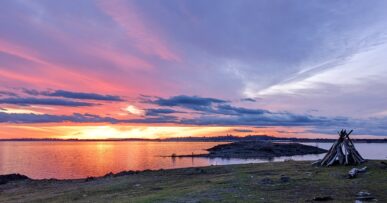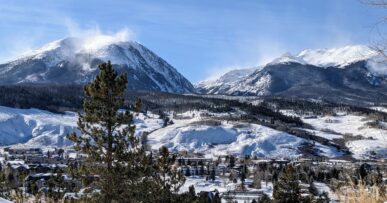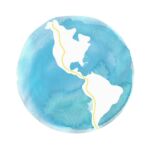July 25- August 8
The final weeks were spent reveling in having found our daily rhythm: loading the boat, mid-day snacks and yerba mate, Ikea bags key to moving kit between boat and camp, pack your snacks the night before, and getting really good at reading sand bars.
![]()
![]()
![]()
Disembodying morning fogs blanketed the early hours when the river was glass, until late-morning winds began to stir and the sun cut through. Perspective, angle, and distance still toyed with perception but the binoculars and Coast Guard buoys along the deepest channels kept us flowing.
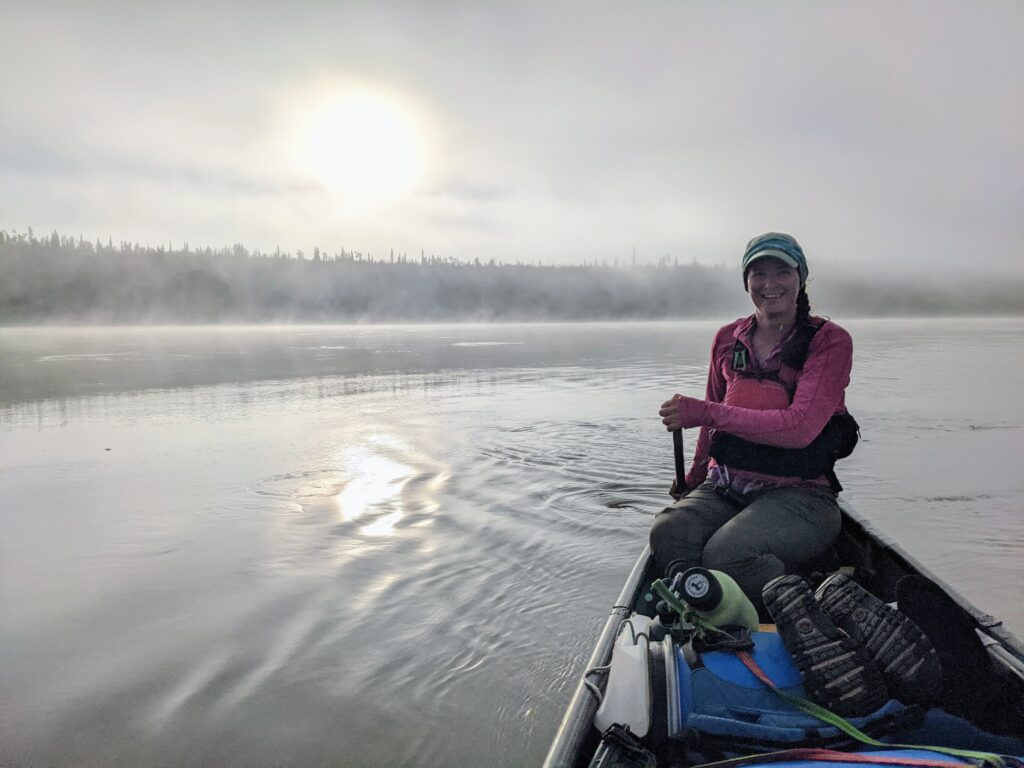
We passed through Norman Wells and picked up our final resupply. An oil field town, it has more businesses and a different pressure from the hamlets and communities we’d acclimated to. This certainly felt like “coming to town.” After all, there was a restaurant AND the Legion did burgers some nights of the week. This was the first restaurant we’d seen since Fort Providence, a month back.
A shuttle boat ran rotations out to the dozen drilling islands which dotted the river. The oil slicks atop the water made rainbows and the folks in town assured us it was natural without our even asking. Besides the luxury of a restaurant and 2 grocery stores, our favorite feature was a packed little museum with everything from pelts to rocks and mineral samples. This is also the origin point of the Canol Trail, which had been one of the first segments of trail I had found when researching potential routes across Canada.
![]()
![]()
![]()
Further down the river we passed Carcajou Ridge, the kind of rock figure which makes you want to put down your paddle and pick up the sketch book. Further along we came into The Ramparts, or Fee Yee. A 2 km long narrowing of the Big River to a mere 100 m across between 40 m tall cliffs of limestone, it induces all the acceleration and churning of funneling this volume of water. Approaching from river right we were able to avoid the rapids completely and the choppiness at the entrance was the most water excitement we’d experienced in some time.
![]()
Halfway along it, eagle eye Neon spotted the Madonna in the Rock on river right. She was sculpted by a local artist to bless and protect lives lost in the Big River. When she was placed, the local diocese, of Our Lady of Good Hope, had a riverside service.
A month later, the sculptor drowned.
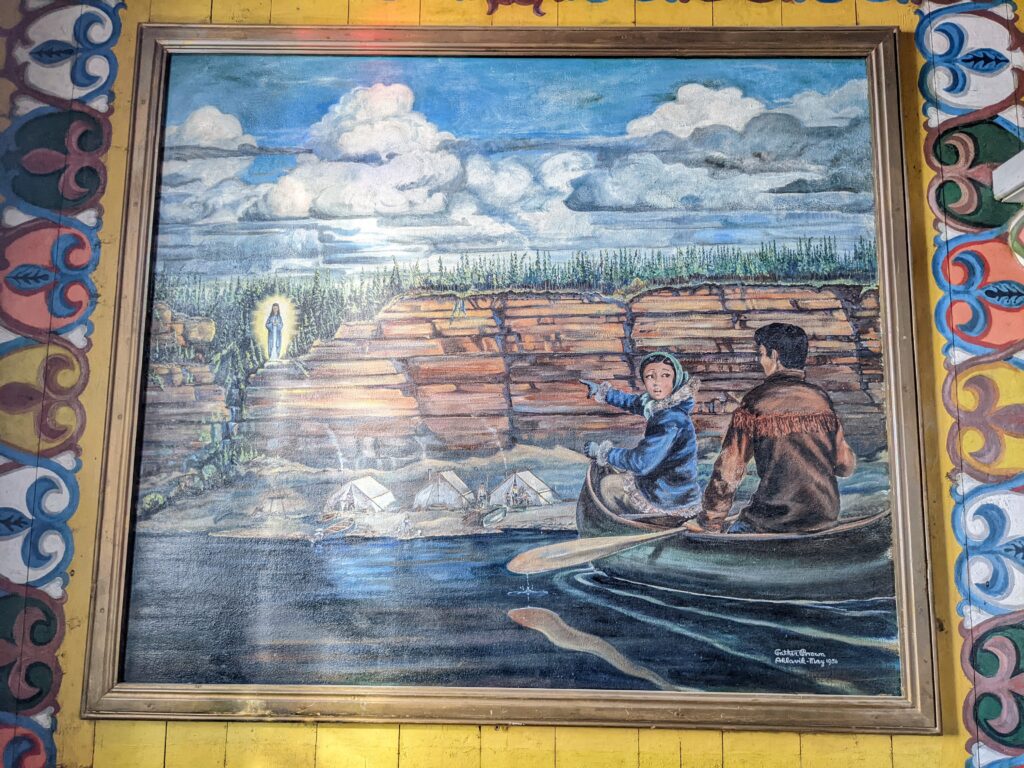
At the end of the Fee Yee, a young eagle sat at a confluence called The Point, where everyone from Fort Good Hope fish, park their boats, and go to watch the river. I couldn’t help thinking about the defensive strategy the cliffs provide for that community. It pitched me back to the positioning of El Castillo on the San Juan in Nicaragua, or the Sumidero Canyon in Chiapas Mexico, or the sea caves on the coast of Wales. The frank wisdom of working with land features to meet community needs is about more than food and shelter from elements.
![]()
Here we pushed the 6 degrees of separation theory. Keith had connected us to Bruce had pointed us to Arno & Elaine, had called upon their daughters, who’d reached back to college cross country ski team and put us in touch with Anna-Spring who was living in Fort Good Hope with her partner, Leonard.
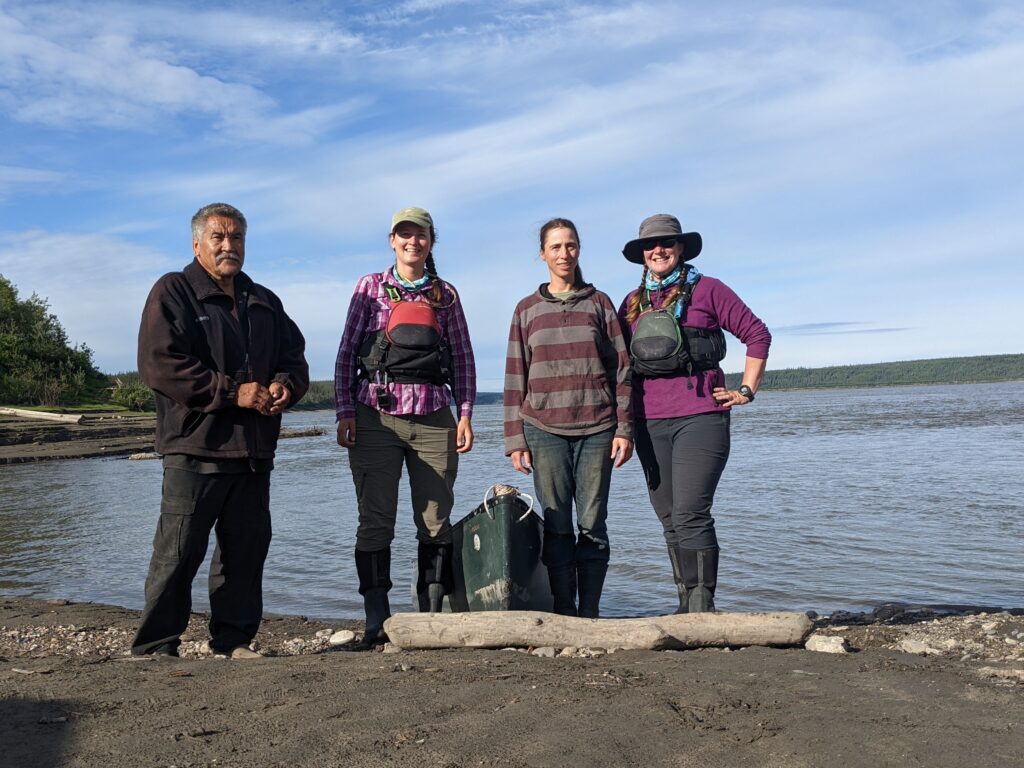 They had been following our inReach tracker and easily met us at The Point with warm welcome. They put us up in an expedition tent with standing room space and offered that we stay as long as we needed. This was a particular relief as a wind storm with gusts of 70 kph tore across the river the following day.
They had been following our inReach tracker and easily met us at The Point with warm welcome. They put us up in an expedition tent with standing room space and offered that we stay as long as we needed. This was a particular relief as a wind storm with gusts of 70 kph tore across the river the following day.
Instead of dealing with that, we got to shower, do laundry, try moose and dry fish, pet puppies, and ate more fresh produce than we’d had in the previous 2 months combined.
![]()
![]()
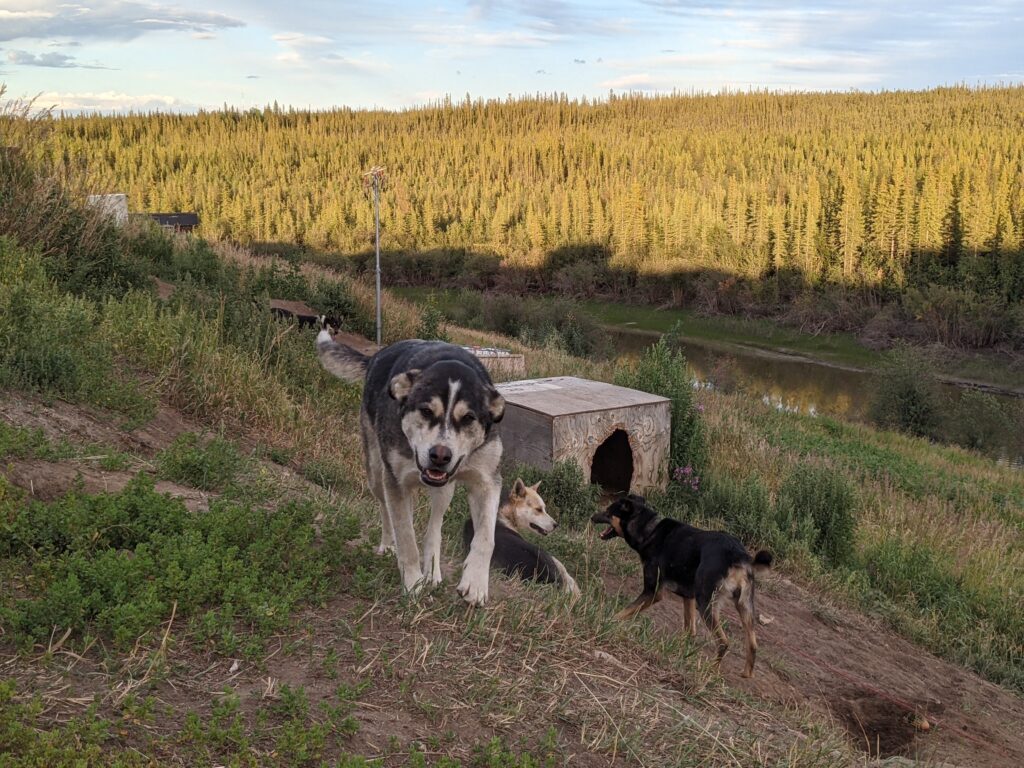
One afternoon Anna-Spring ran over to a neighbor’s house with a whole pack of dogs and kiddo at her heels, to borrow the keys to Our Lady of Good Hope Church. Placed at the highest point of land on a bluff over the river, its steeple makes it the tallest building in town as well as being the oldest permanent structure in northern Canada!
![]()
Bows were still on the ends of pews from a recent wedding. Upon entering, the first thing you absorb (via both sight and scent) is the hue of royal blue on the vaulted ceilings, then the elaborate frescoes which adorn the walls (all of which are tended and touched up regularly). The richness comes from natural pigments and fish oil.
The frescoes were painted by adults, youth, and Scouts throughout the years. Some of the artists likely lay at rest in the white picket fence graveyard enmeshed with the grove which reaches up the arm of land, hugging the church.
![]()
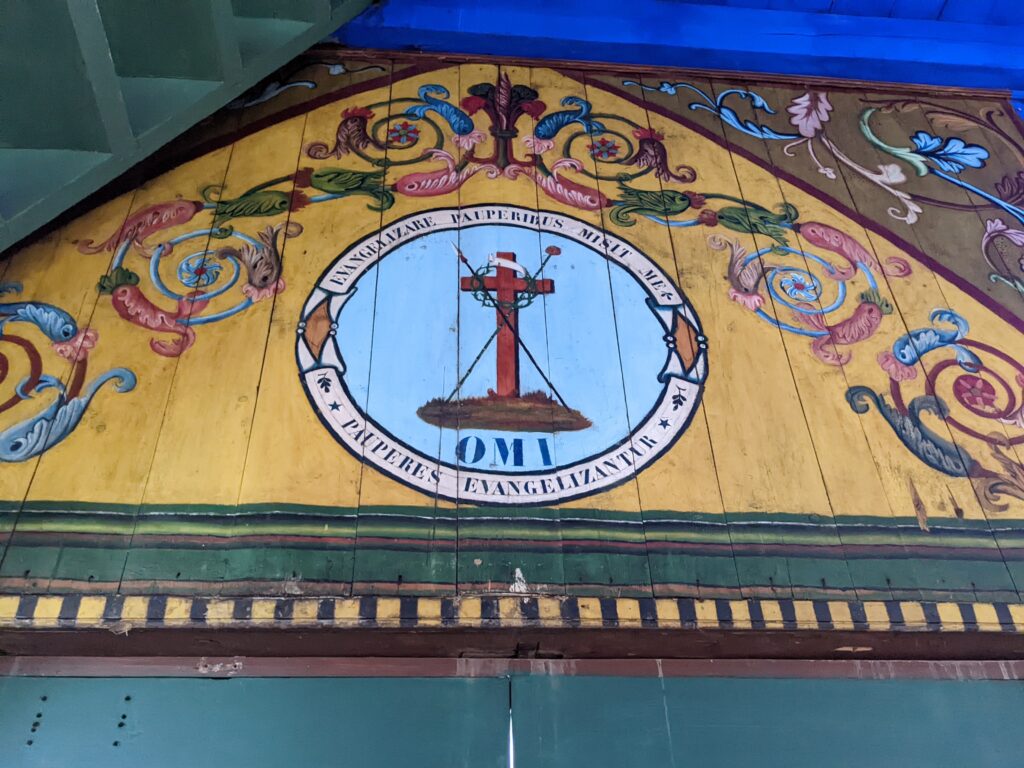
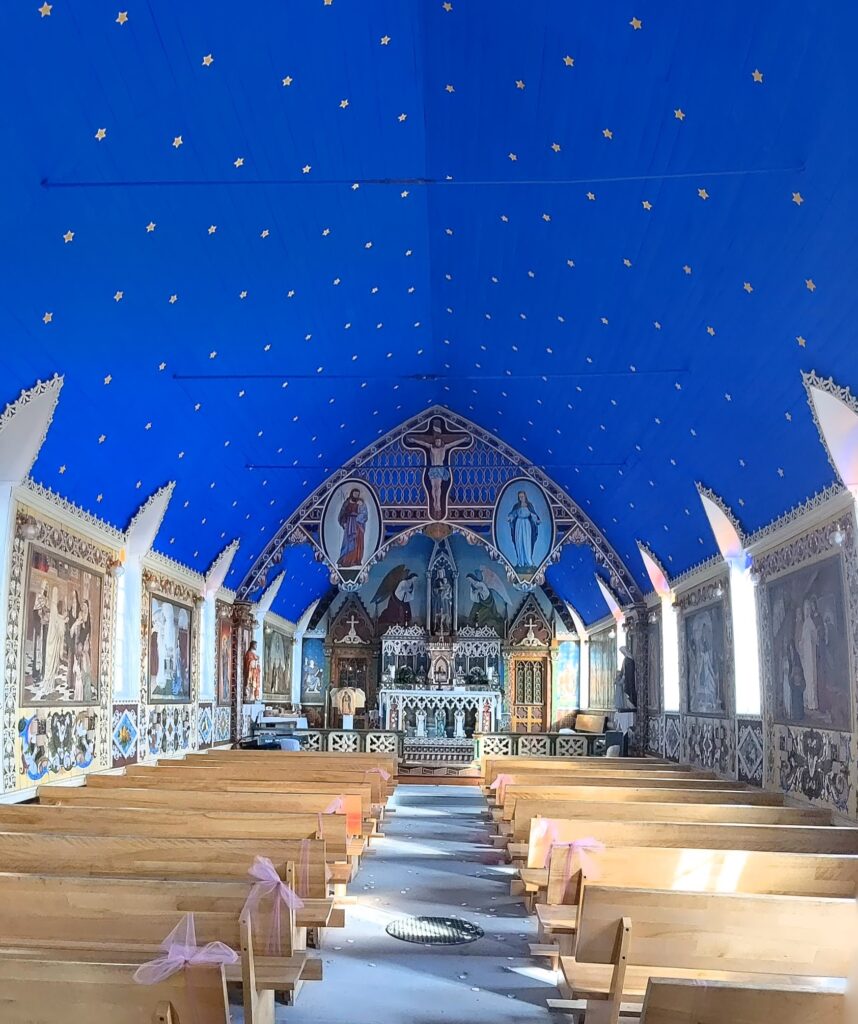
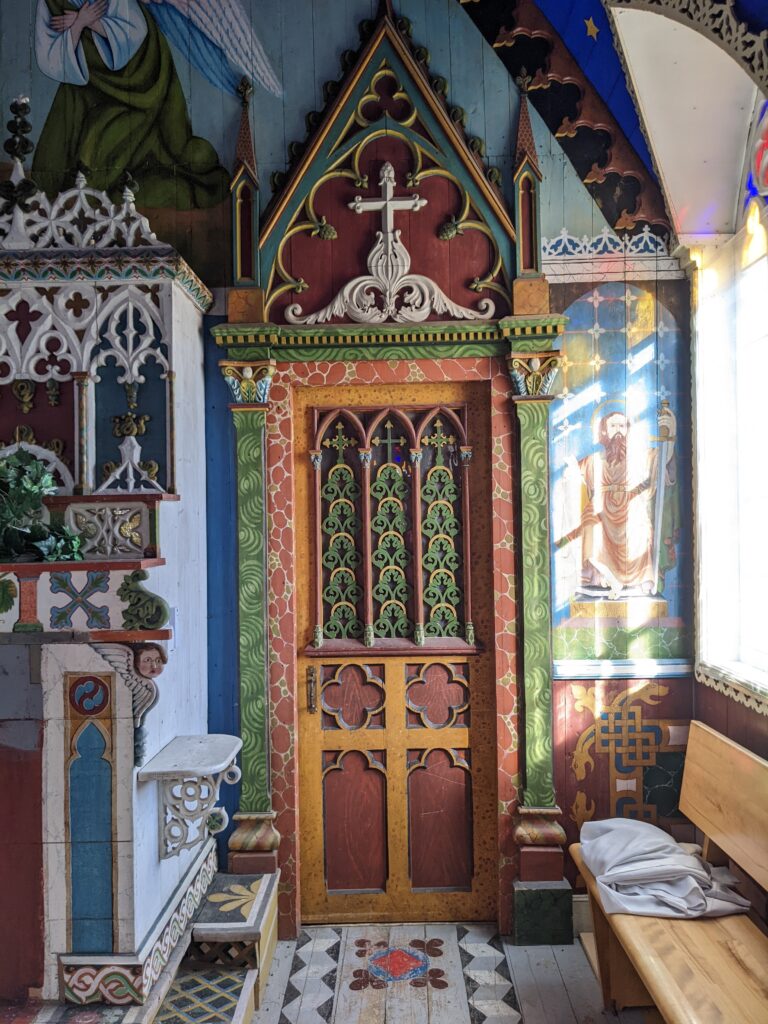
Another afternoon Anna-Spring took us to look for muskox Quiviut (but not seeing any muskoxen), we spent most of the outing watching the crane crews migrating while munching on berries.
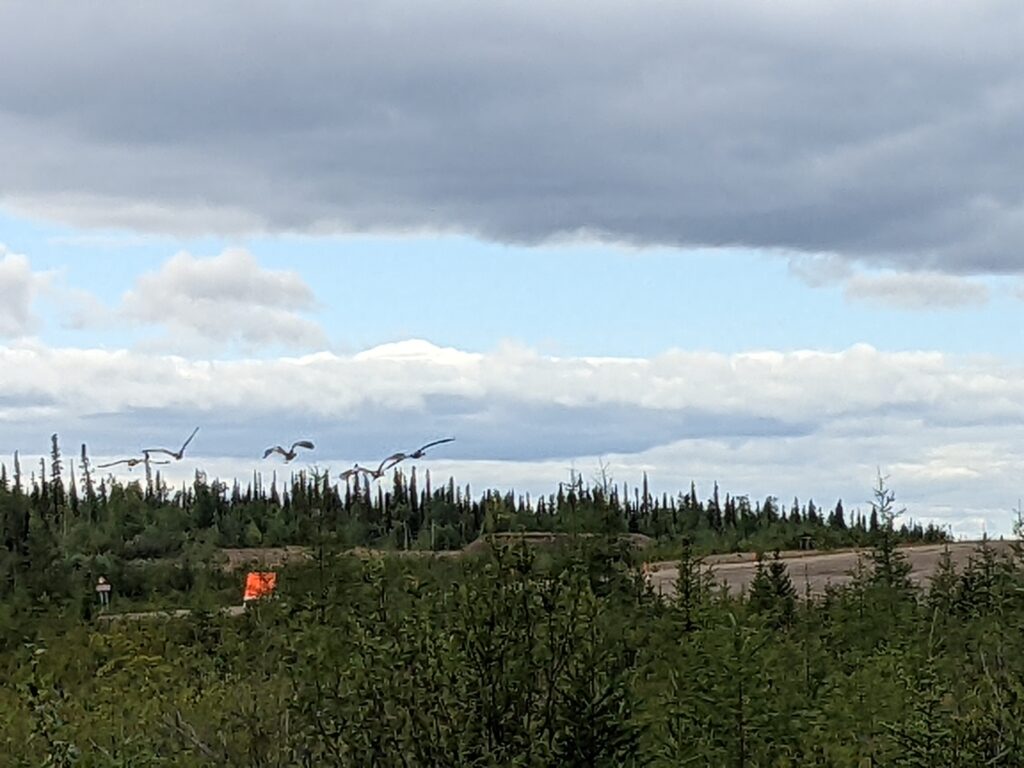
![]()
When we left, they walked back down to The Point to see us off. Coming around the corner out of the creek, we saw they were joined by one of Leonard’s childhood friends. We chatted a bit more and the gentlemen spoke of paddling these waters since childhood, knowing and naming every feature and stories of adventures had. As they spoke, I looked toward where they gestured and again marveled at the intimacy with which they know every nook and cranny in land and time.
We hugged then pointed our nose into current. They began to walk back up the road, paralleling us and from the bank excitedly called out that other folks in town reported another canoeing duo had also just left! Trusty word of mouth thrills, we were immediately curious, as these would be the first non-motorized travelers we had met on the whole trip.
The news, called across moving water, felt like one final blessing goodbye. A sort of, “our community have an eye out for your kind and we’ll take care of you when we can,” message. Which proved pervasively true when we leap frogged the other paddlers at the circumference of the drifting Arctic Circle and they told of being invited to the wedding festivities.
